|
|
Post by briar on Jun 16, 2016 10:37:14 GMT -5
|
|
|
|
Post by briar on Jun 16, 2016 10:42:41 GMT -5
Normal conditions:
The pot seems to have no trouble keeping a 10-15f temperature differential in my heat and humidity with direct morning to early afternoon sun.
I fill the water reservoir first thing in the morning and so far that's been enough. I expect it to probably take another refill late afternoon during peak times.
In the worst case scenario trial the water reservoir lasted 2-3hrs.
If nothing else, it is fun trying :-)
|
|
|
|
Post by WillyCKH on Jun 16, 2016 11:55:31 GMT -5
The setup looks great! Is that thermo camera? so cool!
|
|
|
|
Post by roraima on Jun 16, 2016 12:10:18 GMT -5
Very nice, I like your design. It's also great you have those quantitative measurements of your new setup.
Have you considered a live Sphagnum top dressing to complete your cooling system?
|
|
|
|
Post by briar on Jun 16, 2016 12:42:00 GMT -5
willy, thanks and yes it is.... sort of an inexpensive (relatively speaking) Fluke model. ( I too am involved in mechatronics, infrared thermography is one of the subjects I teach)
roraima, Live sphagnum would likely be a good addition. Not sure how much additional cooling it would provide. Would need to try and see. There are many variables at play such as emissivity, reflectivity, any additional effects of transpiration etc.
The cooling water reservoir is isolated from the plant. So adding a live sphagnum layer to the sand may be the most effective from a purely cooling point of view. However, it may also decrease the thermal transfer between the two clay pots...
Dunno, but very good idea to try!
|
|
|
|
Post by briar on Jun 16, 2016 12:57:11 GMT -5
Historical side note,
I've tried 100% live sphagnum in the past for outdoor Darlingtonia...
In my application it was unsuccessful, a slow three decline until death.
|
|
|
|
Post by jbron on Jun 16, 2016 17:45:37 GMT -5
Awesome set up! Looking forward to seeing how well that works, as I have summer temps that get around the same and I would like to try and grow Darlingtonia myself!
|
|
|
|
Post by Apoplast on Jun 16, 2016 20:31:28 GMT -5
Hi Butch - Another intriguing rig by one of my favorite profs! I can imagine that your outdoor conditions don't exactly mimic the natural climate for the species. Love the Fluke! Wanted one for years - just haven't had a reason to pick one up. If this works, sounds like you'll have some data. Might be worth thinking about dropping Bob Z a line and submitting a little article for the CPN. I'll be checking back here for updates for sure!
Curious though, I'm guessing you hit some decently high temps and low VPD. Are you planning on PM shade, or elevating the pot as the summer sets in?
As an aside, your "Tincher Tray" is working great for me and a friend here in Minnesota. I'm so happy with it, I'm planning on automating my condensation collection bucket under my portable A/C unit, running aquarium air-line out the garage. Getting tired of emptying the bucket by hand. Butch T: making CP growing less work and more fun (I decided you needed a motto).
|
|
|
|
Post by briar on Jun 17, 2016 12:06:14 GMT -5
Well, August is typically our hottest and driest month.
Hopefully the low RH/high VPD will provide the needed evaporation rate.
I think the question will be how will the cooling reservoir hold out. Historically, in Nigeria where these are used to store food they fill the cooling reservoir twice a day. I assume they are keeping them in the shade if there is any available.
But of course airflow is required.
Initial goal is plant growth with color being secondary. So I think if it becomes an issue my first option will be afternoon shade. After that, I don't know really... just have to experiment with the various options and see what gives the best cooling with the longest reservoir life.
good questions...
very pleased you are liking the watering system. I think its the bomb, been using mine 5 years or so now. I couldn't imagine using anything else.
I like simple and don't like technology for the sake of technology.
Less is often better imho.
some say the glass if half empty, other say half full... im of the school of thought that says the glass is twice as big as it needs to be :-)
|
|
|
|
Post by Apoplast on Jun 17, 2016 19:15:59 GMT -5
Hi Butch - Didn't know your August was dry. I picture that part of the world being hot and humid in August. It's probably projection. Nearest I've lived is Bloomington, Indiana. Anyhow, it's a really cool experiment! I've been thinking about doing a modified hydroponic setup fr my Dars, but I face different challenges than you do. Please do keep us posted here.
|
|
|
|
Post by briar on Jun 17, 2016 20:34:42 GMT -5
If you try please keep me posted, I would be most interested in your results  I've considered hydroponics for Darlingtonia as well. Currently, I'm having some good results using hydro with 3 wasabi starters I got for Christmas. If it works well for Wasabi, I bet it will work well for Darlingtonia Jan 2016: 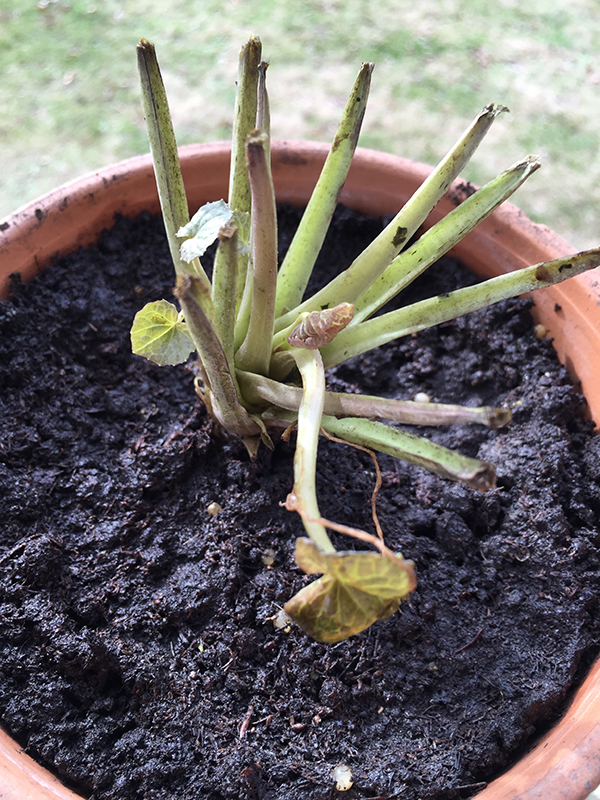 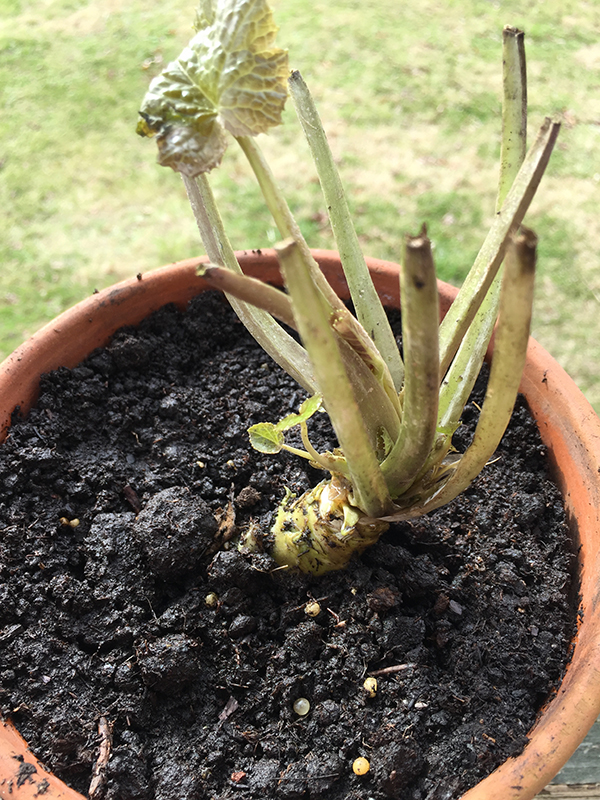 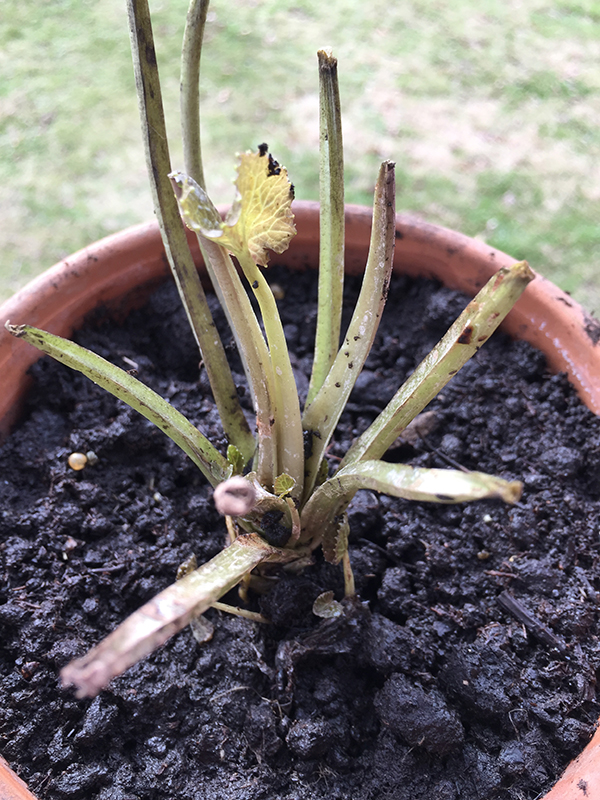 February 2016: 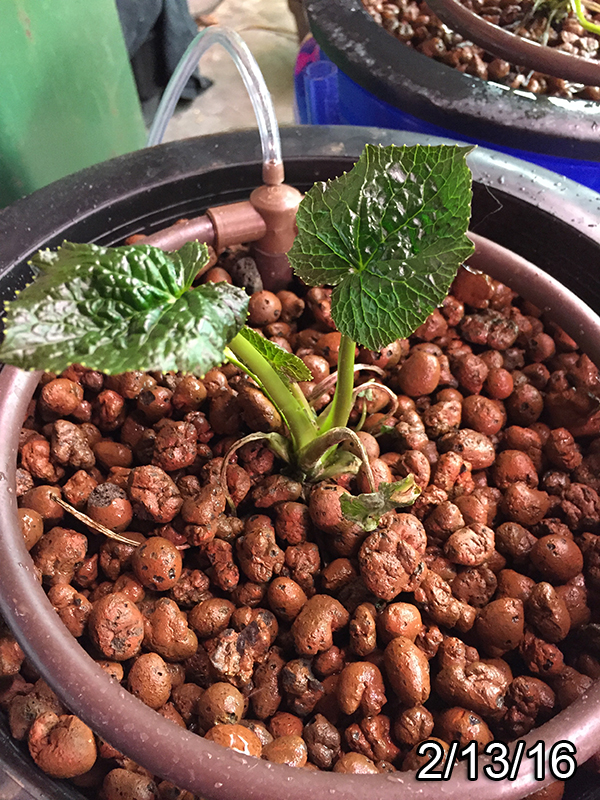 April 2016: 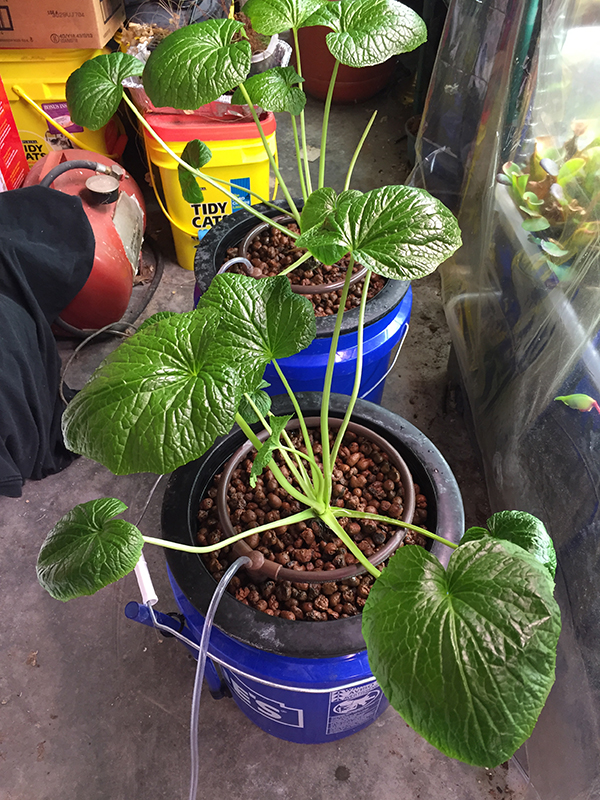 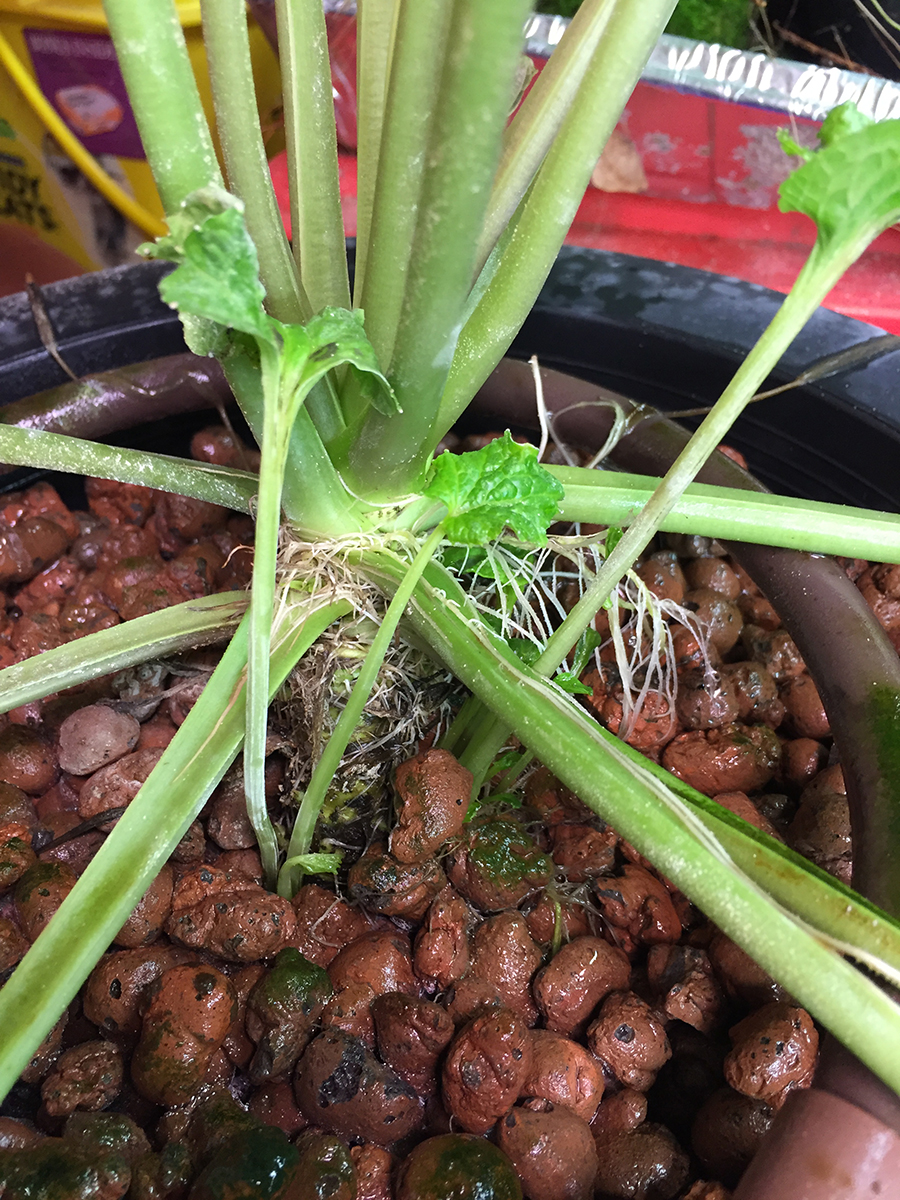 hmmmmmmm fresh wasabi  |
|
|
|
Post by briar on Jun 17, 2016 20:58:27 GMT -5
approx. fresh solution parameters:
pH 4.8 (no additional buffering used)
EC 550 uS/cm
started with RO water @ 22uS/cm)
I change solution about every two weeks, by then it is approaching a pH of 7.0
|
|
|
|
Post by briar on Jul 1, 2016 13:09:32 GMT -5
|
|
|
|
Post by morphman on Jul 1, 2016 14:31:50 GMT -5
I like the idea but I was wondering if it can be done with a Zeer pot like we use back home in Africa for water. Big clay pot with no holes and just porous enough for water to evaporate from the walls. Sorry if it's something already considered and you're already steps ahead of my thoughts. Keep up the updates.
Regards
|
|
|
|
Post by briar on Jul 2, 2016 19:00:58 GMT -5
Morph, I was trying to avoid having the roots submerged yet still be surrounded by the cooling effect of the evaporating water.
I have been playing with the idea of a zeer/thermosiphon hybrid that would be more like what you suggest.
But have yet to come up with an elegant design.
so far the current design seems to be able to maintain a 10-15f temp drop during the hottest part of the day.
|
|